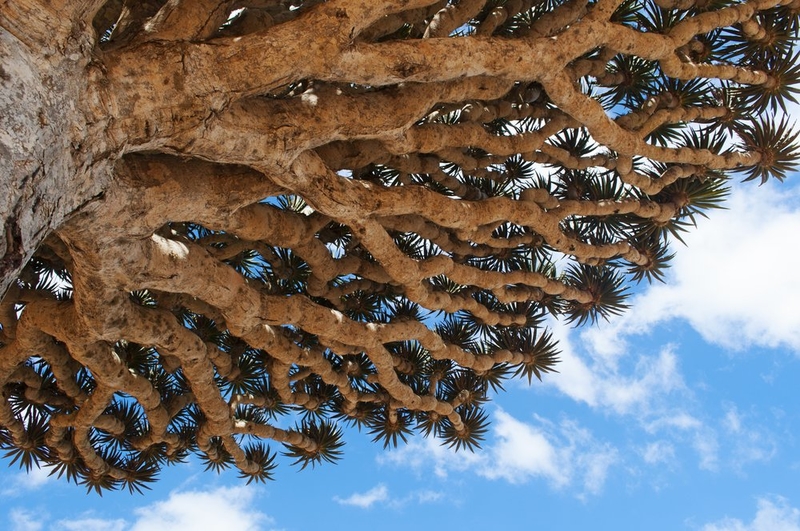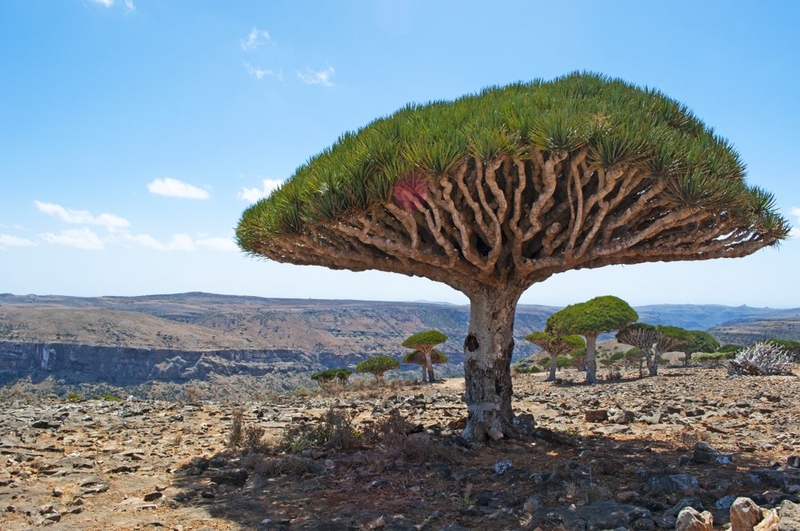The Tree of Life, has come to bear many different shades of meaning. According to the Bible, it grew in the Garden of Eden and the fruits it bore held the power to impart eternal life. Now, 200 miles off the coast of Yemen, explorers have braved the elements to bring us back documentation of the plant that’s thought to be related to it: the Dragon’s Blood tree.

What makes the Dragon’s Blood Tree So Special? These remarkably hardy trees are capable of living thousands of years, and this resilience is believed to be evidence of their remarkable healing properties. They live and thrive in Socotra, a remote island off the coast of Yemen, known locally as “the jewel of the Arabia.” Here, these otherworldly trees have been blooming for countless millennia. Pay careful attention to the dragon blood tree’s unique, umbrella-like appearance because, unless you’re planning a trip to Socotra, you won’t find one of these anywhere else in the world. One of the photographers on the mission, Martin Edström, is concerned about the wellbeing of the trees in light of the many crises that continue to plague the region. From political turmoil to climate change, these are, as Edström explained, “threats that we want to shine a light on.”

The roughest of journeys to reach the tree of life In the company of National Geographic’s Ella Al-Shamahiand and Leon McCarron, Edström journeyed for nearly three days by sea, enduring rough nights under the feet of persistent cockroaches who tickled his face as he tried to snatch some sleep. All this to reach the sacred tree. Then, equipped with his trusty Nikon D850, Edström got snapping, capturing the tree’s essence while his translator, Muhammed, captured it in his own way: harvesting the medicinally valuable resin from one of the tree’s.